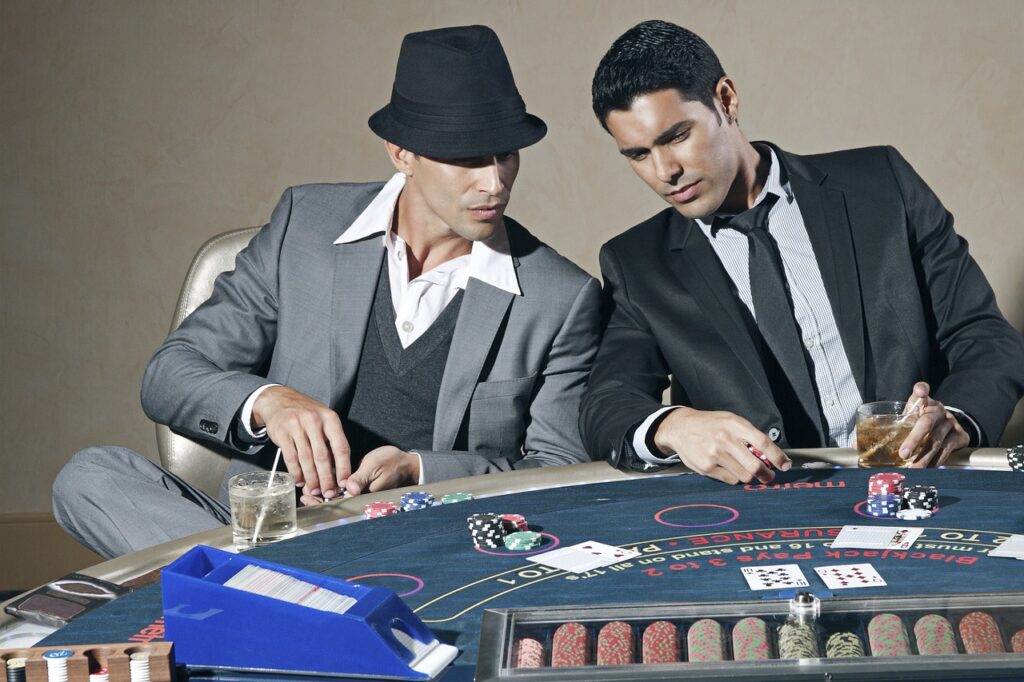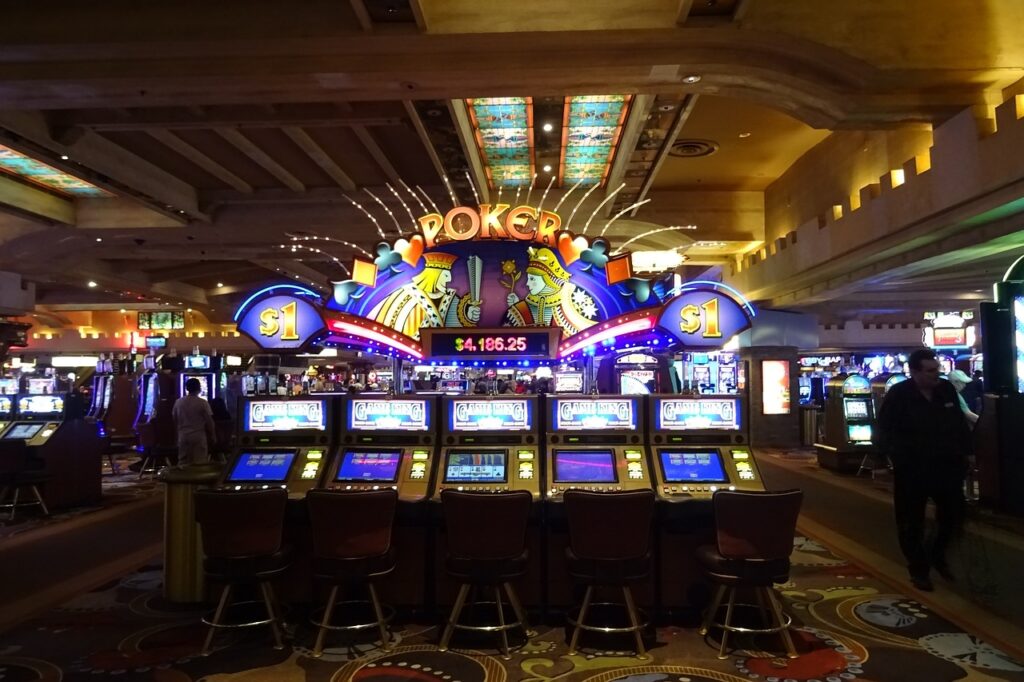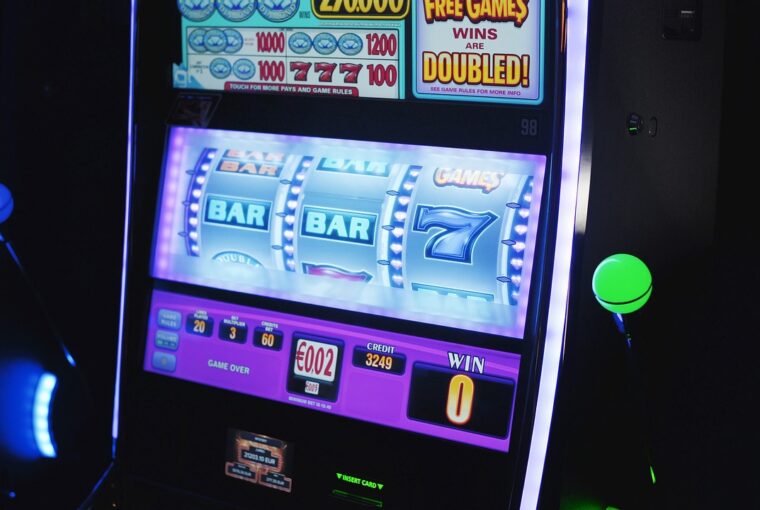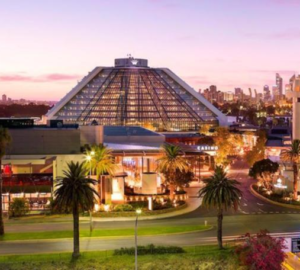In 2012, the Mob Museum in Las Vegas was opened, filled to the brim with evidence of how gambling and the Mafia were inseparable throughout history. There is no better place for a museum dedicated to American organized crime than the Sin City – a luxurious and vibrant monument to the almighty dollar, the swarming den of sophisticated deception.
Upon opening, the Mob Museum was hugely successful, attracting millions of tourists over the following years. On its tenth anniversary, we shall review the thrilling casino legends that contributed to the creation of this Hall of Fame (or, rather, Infamy).
We Built This City on Rock’n’Roll
The Mafia has almost single-handedly laid the foundation for a centralized gambling business worldwide. The relics of their efforts can still be seen in most of today’s brick-and-mortar parlors. Some of the mechanisms were, in fact, so staggeringly effective that today, almost a hundred years later, the newest online gambling platforms, like ElRoyale Casino, Red Dog, or Las Atlantis, still rely on them – albeit modified to comply with the existing laws on gambling.
Our story begins with Oscar Goodman, the present Mayor of Las Vegas. The man, who is already in his 70s, is a lawyer with a rich past. In his young years, he had more than once defended famous American mobsters in courts – such as Meyer Lansky, Nick Scarfo, and Anthony Spilotro. When shooting the film Casino about the role of the Mafia in the creation of the world’s gambling capital, director Martin Scorcese invited Goodman to play a cameo role.
“The Mafia made Vegas,” says Goodman with a touch of pride. But, without the slightest embarrassment, he confesses: “It made me a rich man. The role of the Mafia in the formation of Las Vegas is more than a legend – it’s a fact. And this is what fundamentally distinguishes Las Vegas from other cities”.
The Usual Suspects

The mob bosses who contributed the most to the flourishing Vegas we know today were Benjamin “Bugsy” Siegel, his friend and financier of the Las Vegas gambling business Meyer Lansky and casino owner Frank “Lefty” Rosenthal.
Few Americans know that Meyer Lansky, the biggest New York mobster of the 1930s, was a native of Grodno, Belarus, and his full name was Mark Sukhomlansky. Fleeing the Jewish pogroms in his homeland, his family fled to America in 1911 on the steamship Kursk. An immigration official negligently wrote on the papers for him, then a 9-year-old boy, only the end of his last name, “Lansky”, and the name caught on for good.
Bugsy Siegel (real last name Siegelbaum), born on the outskirts of Brooklyn into a family of Russian Jewish immigrants, met Lansky through a sprawling network of teenage street gangs. Together they formed Bug & Meyer, which later evolved into Murder Incorporated, a semi-commercial division of professional killers headed by Charlie Luciano. All questions of blood feuds and all clan and faction squabbles were solved through this secret organization, which has accumulated over 20 years up to a thousand contract murders. Siegel was its main professional killer.
A Force to Reckon With
Lansky was called ‘the king without a crown, the treasurer, the accountant, the banker of the mafia’. He got rich from alcoholic beverages during the Prohibition period. And when the law was repealed in 1933, he started a casino. Having accumulated huge capital, he kept all the reins in his hands but did not claim expressive power – that was his credo that allowed for clandestine scheming behind the curtains. Clever, cunning, and cautious, he completely subdued all the mafia structures of America, uniting them into the Crime Syndicate.
In the Mobsters movie trailer, released in 1991, our anti-heroes are presented as follows: “There were four of them. They were special, and they knew it. They made themselves a force to be reckoned with across the whole continent; they enforced their own laws with strength and wit and a Tommy gun. They became a legend in American criminal history! In the movie, the great gangsters of yore come to life: the charming Charlie “Lucky” Luciano, cunning Meyer Lansky, cruel Benny “Bugsy” Siegel, and the king of Harlem, Sicilian Frank Costello – the criminals who buried the old traditions of the Mafia, and opened a new page of the transatlantic gangster chronicles.
The Founding Fathers
To launder money, Lansky bought an offshore bank in Switzerland and controlled all the casinos and other sleazy establishments in Florida, New Orleans, and Cuba. The New York gambling business belonged to another famous gangster, Arnold Rothstein, nicknamed Mr. Broadway. East Coast mobsters did not immediately appreciate the opportunities of the West – especially the delayed gratification of the gambling business. Siegel was the first among them to fully understand, embrace, and successfully invest in gambling on an industrial scale.
By doing contract murders, Siegel made enemies in New York and was forced to retreat to Los Angeles in the late 1930s. Imposing in his looks, always dressed to perfection, charming and courteous with women, and never tight-fisted with his friends, he quickly and effortlessly penetrated the elite society of Hollywood stars, who could not assume that they were dealing with a ruthless killer with a lightning-fast reaction and an explosive temper.
At some point, Bugsy got fed up with the killing business that made his wallet burst with blood-smeared cash. He had everything: money, houses, cars, and women. But he wanted ordinary human happiness. While attending one of the frequent Hollywood parties, Benny met his only true love – a young actress Virginia Hill, known in her starlet circles under the nickname Flamingo.
The Promised Land
Looking for an opportunity to escape Los Angeles and start life anew, Bugsy turned his eyes to Nevada, the only place in the United States where gambling had been legalized shortly before. His search revealed an unremarkable settlement in the middle of the Mojave Desert with an insignificant name that meant nothing to him and almost anyone else in the country. The name was, of course, Las Vegas.
It took an enviable imagination and courage not only to take the risk but also to borrow a million dollars from the “Grand Council” of the Syndicate (that is, from the gangster’s coffers) to implement his idea. Only one person believed in his idea: Meyer Lansky. And having Lansky by your side was everything Bugsy needed.
Siegel chose a deserted place, away from settlements, and started building the first hotel-casino, naming it Flamingo after his beloved. However, he failed to complete the project – the casino was never finished, and he began to steal the money he borrowed and paid with his life. Finally, in 1946, he was shot at his villa in Los Angeles through a window. The grand funeral of Benjamin Siegel with a sea of flowers and limousines made quite a ruckus in the newspapers at that time.
Gathering Steam
Las Vegas, launched by the American criminal networks, thrived on. Following Flamingo, casino hotels began to sprout one after another – Desert Inn, Sands, Dunes, Stardust, Riviera, Hacienda, Sahara, Fremont, Tropicana, Aladdin, Circus Circus… The dark early days of Las Vegas were gradually getting forgotten under the gloss and glamour of the budding Sin City, finally recognized by the top-tier investors with multi-billion portfolios. The Mafia began to alienate itself from the gambling business and soon enough gave up its power and influence over Las Vegas.
In 1967, the eccentric millionaire Howard Hughes bought the Sands Casino, thus granting it a fully legal status, which was unprecedented at the time. This deal is considered a turning point from criminal to legal Las Vegas. Mafia syndicate men were replaced by tycoons like Kirk Kerkorian and rich companies that soon merged into gigantic corporations – all quite loyal to the law (and, of course, the corruption that was running rampant).
In 1971 the Flamingo was bought by the Hilton Corporation, which had a contract with a Mafia lawyer Sidney Korshak. (This circumstance banned Hilton from opening a casino in Atlantic City). Nevertheless, the Flamingo is alive to this day, delighting the eye with its magnificent chrysanthemum-like flower of neon in the heart of the Strip, perpetuating the memory of Bugsy and his love.
Around it grew the giants like Caesars Palace, Bellagio, MGM, Mandalay Bay, and Wynn. Finally, a good half of Las Vegas was taken over by Harrah’s, the largest gambling corporation in the world, which devoured other companies and built casino hotels all over America under different brands. Harrah’s currently enjoys annual revenues of about $10.8 billion.
Haunted Heritage
And that is how Sin City was transformed into the “Gaming Paradise on Earth”. Today it generates so much revenue for Nevada that the authorities have found it possible to abolish the state income tax on businesses and banking. How can you not feel gratitude to the founding fathers who created the basis for the current prosperity, how not to perpetuate their names and memory?
It is fair to say that the Mob Museum in Las Vegas is not precisely the pioneering establishment of this kind. In the city of the Big Apple, an enthusiast opened a private museum of the New York Mafia called Made in America. Albert Nash and his grandmother, a former tailor, like to recall how their workshop was once visited by “Bugsy Siegel himself”, which inspired her grandson to create the museum. For several years he collected all kinds of junk associated in one way or another with the activities, life, and death of famous New York mobsters, searching attics and basements and the most unexpected places for months on end. He gathered as many as 1500 exhibits, valuing his collection at $ 1.5 million. The pictures of Siegel and Lansky rightfully occupy the most honorable place in his makeshift museum.
Casino Cold War

Starting from 1947, the Cuban gambling and entertainment market was controlled by two criminal gangs. One was the Genovese Family, led and controlled by Meyer Lansky (yes, him again!). The other organization, the Tampa Family, was run by Santo Trafficante, whose son became the gang’s boss in 1954. In those days, the governments of Ramón Grau San Martín and Carlos Prio Socarras created ideal conditions for corruption, which flourished even at the highest levels.
These years were known as the “Cuban style”. Gangsters, assassins who murdered police and government officials, and gangs of criminals that organized shootings in broad daylight on almost every street in the Cuban capital were an integral part of this style. The Italian-American Mafia pursued purely commercial goals in Cuba while controlling its investments and keeping an eye on the political situation in the country. It was necessary to gain the support of the authorities.
According to official statistics, 16 hotels and motels were built in Havana between 1952 and 1958. The largest of them, the Habana Hilton, Habana Riviera, and Capri, were built within two years (1957-58), with 44 million dollars invested in their construction. After the March 1952 coup organized by Fulgencio Batista, ties between the Italian-American Mafia and the Cuban government strengthened, providing new impetus for gambling and investment in the tourist business.
Cuban researchers claim that the CIA was interested in eliminating Fidel Castro and decided to use members of the Italian-American Mafia to do so. It is well known that CIA agent Robert Mayo was in contact with John Rosselli’s gangsters. In August 1960, there were several meetings between the Mafia and the CIA, which resulted in the “pact” being approved, and the gangsters began preparations. Sam Giancana, Jimmy Rosselli, and Santo Trafficante Junior were to play a key role in the operation and select an assassin, but both this and other plans fell through.
Meanwhile, Lansky, who did not participate in political games, continued to live the life of a millionaire in 1980, along with Rockefeller, David Packard, Yoko Ono, and other famous personalities, made the list of the 400 wealthiest people in the United States. He lived in the shadows and died a peaceful death in 1983.
Trafficante Junior took over the Tampa family and followed in the footsteps of his predecessor. He had many problems with the FBI but managed for another 30 years to deal with drug trafficking, fraud, and organizing thefts. He died in 1987 at the age of 73, being a huge pain in the rear for the U.S. authorities until his last day.
- Are Your Assets in Danger if Your Spouse Gets Into a Car Accident During Your Divorce? - July 23, 2024
- Breaking Down The Costs: How Much Does Crime Scene Cleanup Cost? - July 10, 2024
- Can Weed Make You Angry? - July 3, 2024









